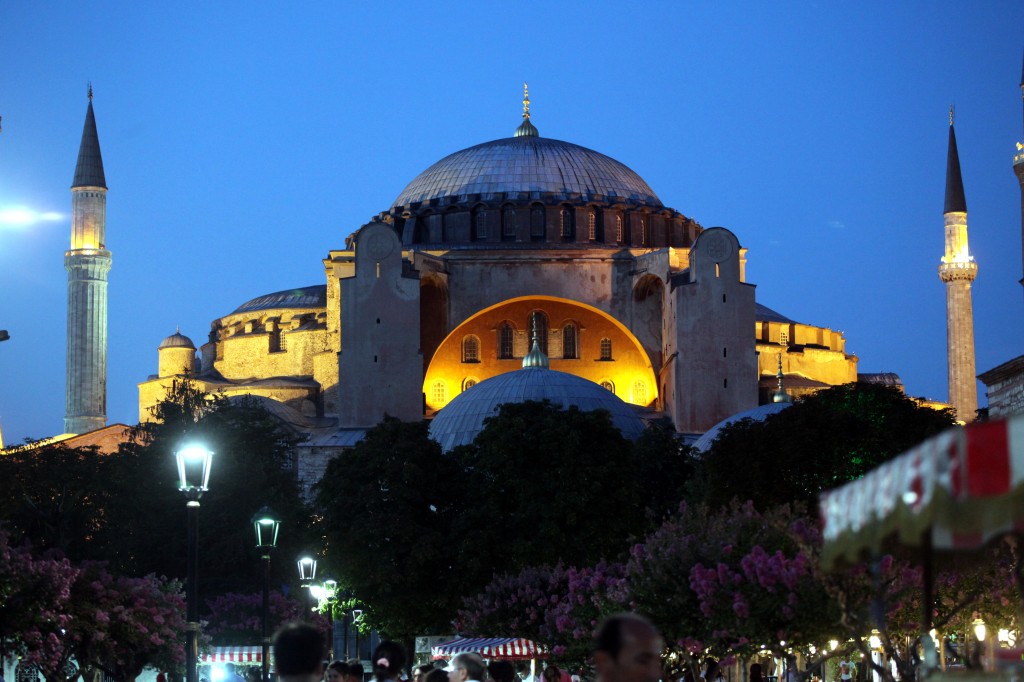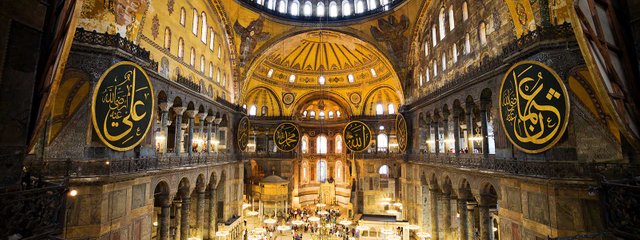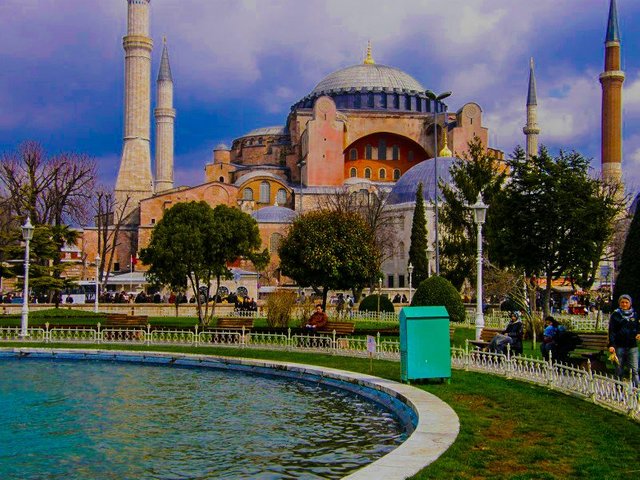Hagia Sophia is among the most visited museums; is one of the world's most prominent monuments in the history of art and architecture and is shown as the 8th wonder of the world.

, A historical museum in Istanbul. It is a basilica-planned patriarchal cathedral constructed by the Byzantine Emperor Justinian I. By the time of 532-537 in the old city center of Istanbul on the historical peninsula, it was converted into a monument by Sultan Mehmet the Conqueror in 1453 after the capture of Istanbul by the Ottomans.

It has been serving as a museum since 1935. [2] Haghia Sophia is a domed basilica type building that combines the basilica plan and the central plan in architectural terms and is considered as an important turning point in the history of architecture with the features of the dome passage and the supporting system.
The word "moon" in the name of Hagia Sophia comes from the word "sophos" which means "wisdom" in ancient Greeks, not the name of any person, "sacred, holy," "sofia" The name "aya sofya" means "holy wisdom" or "divine wisdom" and is considered one of the three qualities of God in Orthodoxy. [4] The famous scholars of the 6th century, the physicist Milied Isidoros and the ruler of the Trallesian mathematician Anthemius It is stated that about 10,000 workers were working in the construction of Hagia Sophia and that Justinian spent a great fortune for this work. [8] One characteristic of this very old building is that some columns, doors and stones used in construction were brought from buildings and temples that were older than the building.

During the Byzantine period Hagia Sophia had a great wealth of "sacred relics". One of these relics is the Silver Iconostasis of 15 meters high. [1] [11] The patriarch of the Patriarch of Constantinople and Hagia Sophia, the center of the Orthodox Church for a thousand years, was founded in 1054 by Patriarch I. Mikhail Kiroularios' Pope IX. It has been witnessed by Leo to have been referred to by the exposition, which in general is considered to be the beginning of Schisma's separation of the Eastern and Western churches.
After the church was converted to a church in 1453, the Ottoman sultan Fatih Sultan Mehmet showed the tolerance of the mosaics with the human figures not destroyed (they were left as they were), only the mosaics covered with thin plaster and plastered for centuries saved natural and artificial destruction. While the mosque was transformed into a mosque, a part of the plaster was removed and the mosaics were again taken to daylight. The Hagia Sophia building, which is seen today, is also known as the Third Haghia Sophia since it is the third church built for the same time. The first two churches were destroyed during the rebellions. The central dome of Hagia Sophia, the largest dome of the period, collapsed many times during the Byzantine period, and has never collapsed since the addition of the retaining walls of the architect Sinan to the building.

amazing Hagia Sophia Museum
Downvoting a post can decrease pending rewards and make it less visible. Common reasons:
Submit
yes amazing very history
Downvoting a post can decrease pending rewards and make it less visible. Common reasons:
Submit